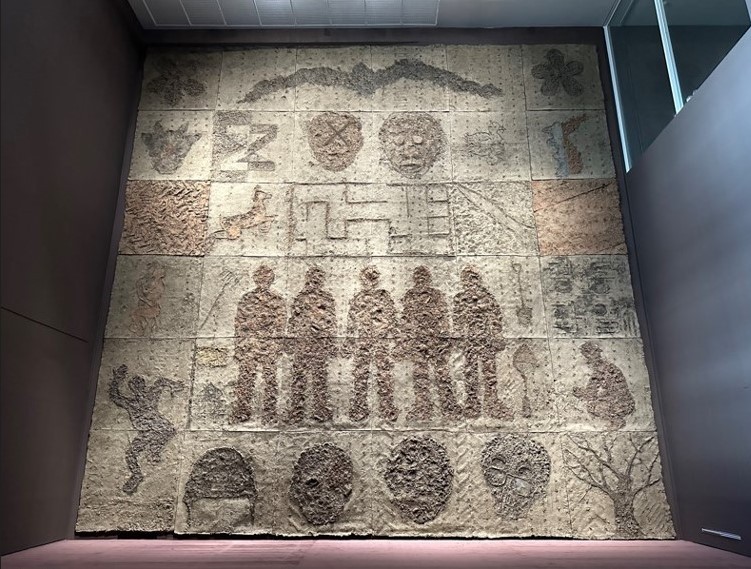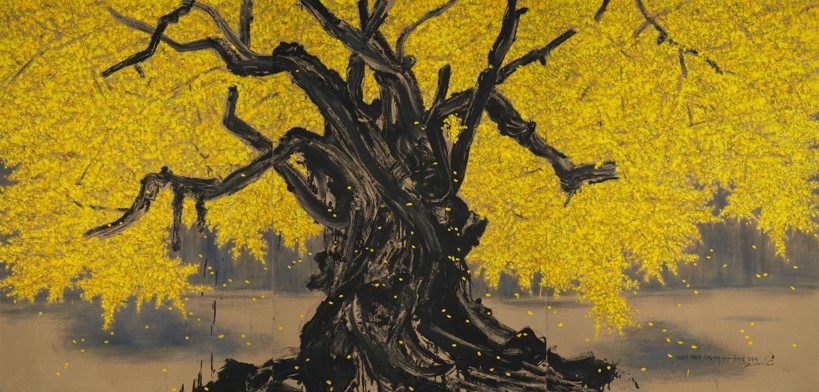 |
"Here, the Rising Land" by Lim Ok-sang at the MMCA (courtesy of the artist and the MMCA) |
 |
"The Sound of the Dirt" by Lim Ok-sang at the MMCA (courtesy of the artist and the MMCA) |
The exhibition features 40 artworks and 130 archived works by the artist. In addition to “Here, the Rising Land,” he unveiled two other masterpieces he completed this year – “The Sound of Dirt” and “Black Puddle.” The soil-surfaced installation “The Sound of Dirt” embodies the head of the Earth goddess Gaia resting on her side.
One can go inside the installation “The Sound of Dirt,” where viewers can experience the breathing of Gaia, mother of the Earth, in a dark and cavernous interior. Her breathing is not necessarily peaceful, sometimes going wild as if sounding a warning for climate change or signaling a public uprising.
The retrospective includes Lim’s early works such as “Face-Morning” created in 1995 with acrylic on paper and clay before the artist started to use real soil. The retrospective is his demonstration of how he has ceaselessly explored and expanded an artistic world of his own for decades.
 |
"Sungkyunkwan Myeongnyundang Drawing a Ginkgo Tree" by Lim Ok-sang at the MMCA (courtesy of the artist and the MMCA) |
The last section shows Lim’s paintings created when the artist was involved in Minjung art in the 1980s and started to explore soil landscapes in the last few years since 2010. “Sungkyunkwan Myeongnyungdang Drawing a Ginkgo Tree” is the highlight of the section, a painting of an old yellow ginkgo tree with a seemingly strong tree trunk expressed with soil and black ink.
Born in 1950 in Buyeo, South Chungcheong Province, Lim received a bachelor’s degree in sculpture and a master’s degree in painting from Seoul National University. He also studied at the Ecole d’Art d’Angouleme in France. Since the 1990s, he has been invited to present his work at numerous international art events, including a 1995 Venice Biennale special exhibition.
The exhibition runs through March 12, 2023.



![[Herald Interview] 'Trump will use tariffs as first line of defense for American manufacturing'](http://res.heraldm.com/phpwas/restmb_idxmake.php?idx=644&simg=/content/image/2024/11/26/20241126050017_0.jpg)

![[Health and care] Getting cancer young: Why cancer isn’t just an older person’s battle](http://res.heraldm.com/phpwas/restmb_idxmake.php?idx=644&simg=/content/image/2024/11/26/20241126050043_0.jpg)

![[Graphic News] International marriages on rise in Korea](http://res.heraldm.com/phpwas/restmb_idxmake.php?idx=644&simg=/content/image/2024/11/25/20241125050091_0.gif)